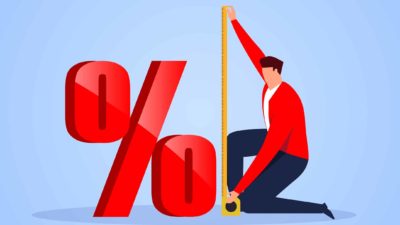It's been a disappointing start to Friday's trade for the S&P/ASX 200 Index (ASX: XJO) and ASX shares so far today. After recording a rise for the past six trading days in a row (including every day this week so far), the ASX 200 appears on track to end this happy streak.
At present, the index has recorded a backward step of 0.35%, dragging the ASX 200 down to around 7,066 points.
Of course, it's always challenging to find the exact reasons why the market behaves as it does. But this Friday, there is a good chance that last night's fresh inflation numbers out of the United States have something to do with it.
According to the US Bureau of Labor Statistics, the American consumer price index rose by 0.4% over September, putting the annual inflation rate in the US at 3.7%.
As reported by CNBC, these statistics came in hotter than most analysts were expecting. The general consensus was for a rise of around 0.3%. So it seems that inflation is proving stickier than many commentators, and probably the US Federal Reserve, were expecting.
What does US inflation have to do with the ASX today?
Many investors may wonder why a slight miss in US inflation numbers would impact the Australian share market. While the US economy feels a world away from Australia, these numbers can affect our economic conditions.
Let's start at the top. If US inflation remains higher than policymakers were expecting, it could mean that US interest rates stay higher for longer to dampen this inflation.
If US interest rates are high, it increases pressure on our own Reserve Bank of Australia (RBA) to raise interest rates or at least leave them at higher levels than we might have otherwise assumed. If the US interest rates remain higher than our own rates (as they are right now), it puts downward pressure on the Australian dollar, which is already at a historically low level of 63.2 US cents.
This, in turn, increases inflationary pressures in our economy (for example, by raising the price of petrol and diesel), which the RBA wants to avoid.
So, it's entirely possible that higher US inflation could spark higher interest rates here in Australia. And that's something ASX investors don't want to see. Thus, it's no surprise to see the ASX 200 get a case of the wobbles today now that we've seen these higher-than-expected American inflation numbers.
It's a bit of a depressing note to end the trading week on, to be sure. But that's the way the cookie is crumbling on the ASX today.









